I found this solution, and it is almost what I need. However, I also need some calculations performed on the data after it is formatted.
I would like to insert 2 blank rows after each group of data, and then sum certain columns after inserting the blank rows.
CURRENT TABLE:
column1 | column2 | column3 | column4
A | 1 | blue | .2
A | 2 | orange | .1
A | 1 | yellow | .5
B | 1 | yellow | .4
B | 1 | blue | .2
C | 2 | green | .1
D | 1 | green | .1
D | 3 | pink | .15
_
DESIRED TABLE
Note: 2 blank rows are inserted after each distinct column1 value group, and the sum of the columns with nummerical values within each distinct group
column1 | column2 | column3 | column4
A | 1 | blue | .2
A | 2 | orange | .1
A | 1 | yellow | .5
| 4 | | .8
| | |
B | 1 | yellow | .4
B | 1 | blue | .2
| 2 | | .6
| | |
C | 2 | green | .1
| 2 | | .1
| | |
D | 1 | green | .1
D | 3 | pink | .15
| 4 | | .25
